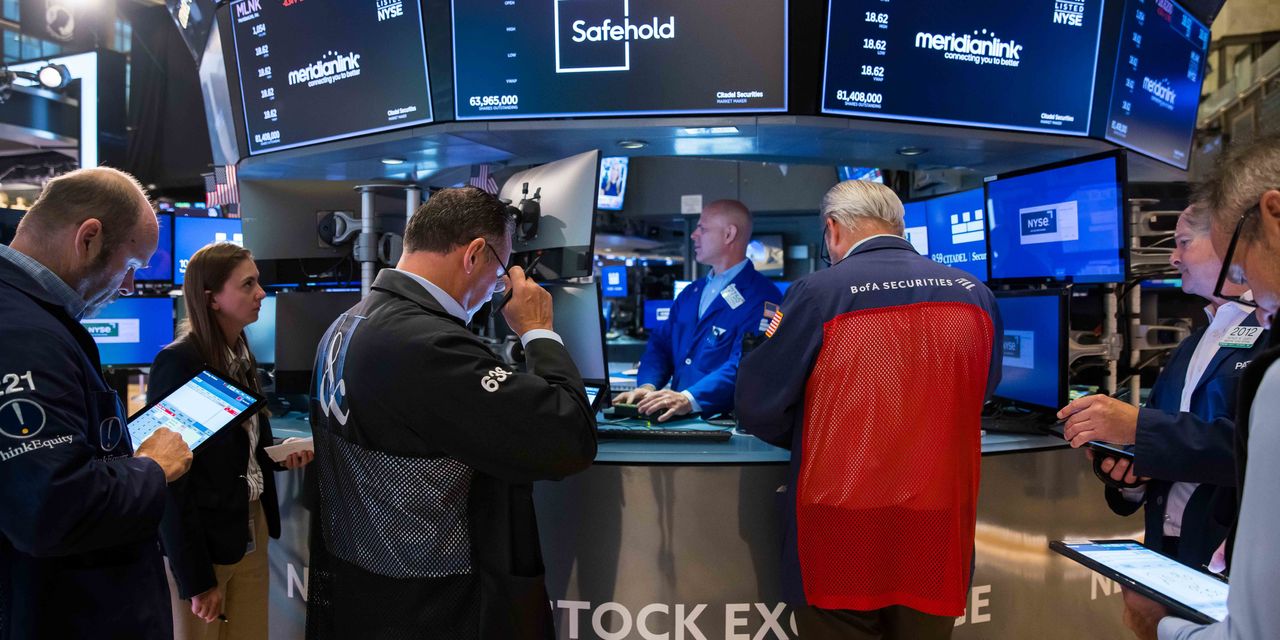Stocks are mixed on Friday, and look prepared to log another down week in a difficult month. Unfortunately for bulls, September may not look much better.
All three major indexes are down in August: As of Thursday’s close the
Dow Jones Industrial Average
is off 1.7%, the
S&P 500
has slid 3.3%, and the previously highflying
Nasdaq Composite
has lost 5%.
Investors could chalk all that up to seasonality: As Fundstrat’s Tom Lee noted at the start of the month, August is historically a difficult time for the stock market to make headway, and in a note to clients on Friday, he says that this particular August “is proving to be even more treacherous than our ‘be wary’ view.”
There are in fact plenty of factors weighing on the market. As Barron’s has noted in recent weeks, stocks are contending with factors like higher bond yields—and worries about potential future interest-rate increases from Federal Reserve—along with the drag from China’s ongoing economic problems; even the U.S. economy’s own strength is cause for concern, as it reinforces the Fed’s case for more rate hikes.
That said, the month’s declines haven’t shaken Lee’s core bullish thesis. “We see this more as ‘it’s August’ rather than the start of a larger rout…we are not in the camp this spills over into a wider selloff. That could happen, but more bad things need to emerge. In fact, there are some signs that we could see the stocks begin to stabilize soon.”
He thinks the market could be in for a little more pain, but argues we could see a bottom as soon as next week, following earnings from
Nvidia
(ticker: NVDA), one of the biggest drivers of the 2023 rally, along with Fed Chair Jay Powell’s upcoming Jackson Hole speech—an event that marked the top last year, before the bear swoon began in earnest.
Nonetheless, while Lee believes that the year-end outlook for the market, which strategists have been boosting lately, remains intact, others are concerned that the near-term selloff could continue. After all 2023’s gains appear to already price in what was a best-case scenario at the start of the year, meaning investors are in search of more rally fuel that has been hard to come by.
Quants have their worries too. ETF.com’s Rob Isbitts on Friday warned, “From a technical analysis standpoint, today’s S&P 500 exhibits a similar pattern to not one, but three August-September wrecks of the past: 1987, 2000 and 2022.”
Certainly history doesn’t offer much hope in terms of near-term relief, given the dreaded September Effect. According to data compiled by Dow Jones, September is easily the worst month in terms of average monthly performance for all three major indexes: In September, the Dow falls an average of 1.08%, the S&P 500 slips 1.12%, and the Nasdaq slides 0.85%, dating back to 1896, 1928, and 1971, respectively.
The competition isn’t even close with the other worst months—February, August, and May, which offer much less-discouraging performances; October, for all its fearsome reputation, tends to see all three indexes rise.
Moreover, September is the only month of the year that the Nasdaq has historically notched a monthly loss—a concern given how tech-heavy this year’s rally has been.
“The
Nasdaq 100 Stock Index
(NDX) has traded below its 10 daily moving average…for more days in a row than at any time this calendar year,” writes Bear Traps’ Larry McDonald. “That is a change. We note changes.”
He also highlights that
Invesco S&P 500 Equal Weight
exchange-traded fund (RSP) has continued to underperform the weighted
SPDR S&P 500
ETF Trust (SPY), “which is great when you are in [an] AI high but not so much when you are in high interest-rate-induced AI rehab.”
Other analysts are more sanguine, if clear-eyed about the possibility of near-term volatility.
“As earnings season wind-down, we suspect a period of backing and filling will develop over the next several months,” writes Piper Sandler’s Craig Johnson. Still, he, too, kept his year-end S&P 500 target above 4,800, writing that moderate pullbacks to key index support levels “will be viewed as buying opportunities, especially among sectors/microgroups showing relative strength.”
In the end, the calendar alone doesn’t control the stock market, but what’s past is prologue, leaving investors understandably jittery on the threshold of September.
If worries about interest rates, yields, and the global economy continue to dominate the narrative, summer’s pain may last beyond the season.
Write to Teresa Rivas at [email protected]
Read the full article here





